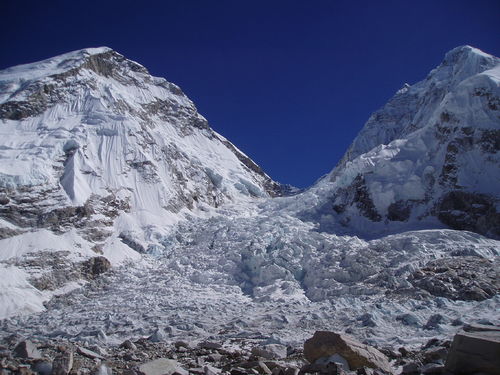Différences entre les versions de « Abstracts of the Kathmandu Workshop 2012 »
| Ligne 37 : | Ligne 37 : | ||
The recent progress in nanoscale technology made possible to address single quantum objects. Very small clusters containing down to a few atoms, molecules or ions can be isolated in various kinds of electromagnetic and optical traps at ultracold temperatures. Apart of nature-made atoms and molecules, the artificial few-body quantum systems become available, such as superconducting circuits or semiconductor quantum dots, that can be also individually addressed. The correlation effects are crucial for determining the properties of such systems. Especially useful is the concept of entanglement which refers to the correlations that have no classical counterpart. The problem of measuring entanglement is very complex and different methods have been proposed for its quantification. I will review several measures that are being used to quantify entanglement in few-body systems and discuss their behavior for simple models of natural and artificial quantum systems. | The recent progress in nanoscale technology made possible to address single quantum objects. Very small clusters containing down to a few atoms, molecules or ions can be isolated in various kinds of electromagnetic and optical traps at ultracold temperatures. Apart of nature-made atoms and molecules, the artificial few-body quantum systems become available, such as superconducting circuits or semiconductor quantum dots, that can be also individually addressed. The correlation effects are crucial for determining the properties of such systems. Especially useful is the concept of entanglement which refers to the correlations that have no classical counterpart. The problem of measuring entanglement is very complex and different methods have been proposed for its quantification. I will review several measures that are being used to quantify entanglement in few-body systems and discuss their behavior for simple models of natural and artificial quantum systems. | ||
| + | |||
| + | |||
| + | == Ante Graovac == | ||
| + | |||
| + | ''Faculty of Science, Nikole Tesle 12, HR-21000 Split, Croatia '' | ||
| + | |||
| + | '''On topology versus geometry in molecules ''' | ||
| + | |||
| + | Graphs can be drawn in an infinite number of ways. However, by analysis of eigenvectors of adjacency and Laplacian matrices of molecular graphs one is able to get drawings which reproduce rather well geometries in some classes of molecules like fullerenes, nanotubes and their junctions. The results obtained up to now will be discussed and possible new routes to generalize graph drawing techniques will be discussed. | ||
| + | |||
| + | This presentation is a result of collaboration with Istvan Laszlo (Budapest) and Tomaz Pisanski (Ljubljana). | ||
Version du 17 janvier 2012 à 11:27
This page is in preparation.
Newari art
The abstracts are in the alphabetical order of the author names.
Alexis Markovits
Laboratoire de Chimie théorique UMR7616 UPMC/CNRS
THE ACTIVE ROLE OF THE SURFACE IN HETEROGENEOUS CATALYSIS
Reaction mechanisms studies in heterogeneous catalysis have been focusing on adsorbate’s behavior for many years. However, in recent years, the role of the surface itself has been emphasized. “Modern surface science techniques have shattered the myth of the rigid surface waiting for the reaction to occur [1], the molecule adsorbing strongly, reacting and desorbing.
Particle shape, size and faceting are already a proof of that. In my talk, I present several examples of the active role of the surface. Surface flexibility during hydrogenation processes is a key feature of catalysts. Ethylidyne is shown to have a crucial role even if it does not directly participate to the catalytic process. Being strongly bound, it remodels the active site. It moves on the metal surface allowing a high turnover. Even though this mobility has been evidenced, it contains an apparent contradiction with the strength of the binding between the adsorbate and the surface. Another very large surface reorganization is due to oxygen. Oxygen yields pinholes on the surface which are mandatory for catalysis.
Ángel Martín Pendás
Universidad de Oviedo. Spain
Fluctuation of electron populations and chemical bonding.
An interesting description of chemical bonds is emerging from the study of the fluctuations of the electron population in real space domains. The latter include the atoms of the Quantum Theory of Atoms in Molecules (QTAIM), as well as the different attraction basins of the Electron Localization Function (ELF). These lecture will present a didactic model of chemical bonding in an N-electron, m-nuclei molecule in terms of the probabilities of the different statistical events coming from distributing N balls in m cages.
Anna Okopinska
Jan Kochanowski University
Entanglement in natural and artificial atoms and molecules.
The recent progress in nanoscale technology made possible to address single quantum objects. Very small clusters containing down to a few atoms, molecules or ions can be isolated in various kinds of electromagnetic and optical traps at ultracold temperatures. Apart of nature-made atoms and molecules, the artificial few-body quantum systems become available, such as superconducting circuits or semiconductor quantum dots, that can be also individually addressed. The correlation effects are crucial for determining the properties of such systems. Especially useful is the concept of entanglement which refers to the correlations that have no classical counterpart. The problem of measuring entanglement is very complex and different methods have been proposed for its quantification. I will review several measures that are being used to quantify entanglement in few-body systems and discuss their behavior for simple models of natural and artificial quantum systems.
Ante Graovac
Faculty of Science, Nikole Tesle 12, HR-21000 Split, Croatia
On topology versus geometry in molecules
Graphs can be drawn in an infinite number of ways. However, by analysis of eigenvectors of adjacency and Laplacian matrices of molecular graphs one is able to get drawings which reproduce rather well geometries in some classes of molecules like fullerenes, nanotubes and their junctions. The results obtained up to now will be discussed and possible new routes to generalize graph drawing techniques will be discussed.
This presentation is a result of collaboration with Istvan Laszlo (Budapest) and Tomaz Pisanski (Ljubljana).
Frank E. Harris
University of Florida
Fully Correlated Wavefunctions for Small Atoms
While this work includes a lot that is new, I would expect to give a talk that is general enough to place the new developments in the context of the line of work that was started by Robert Hill and was advanced significantly by Rebane (St. Petersburg), with some further contributions from our laboratory and from others.
Helen van Aggelen
Ghent University
Variational optimization of second order density matrices for chemistry
A myriad of ab initio methods uses simple mathematical objects to describe a chemical system in order to avoid the ‘exponential wall’ inherent to the wavefunction. This talk evaluates the use of variational second order density matrix methods for chemistry and identifies the major theoretical and computational challenges that need to be overcome to make it successful for chemical applications.
Its major theoretical challenges originate from the need for the second order density matrix to be N-representable: it must be derivable from an ensemble of N-electron states. Our calculations have pointed out major drawbacks of commonly used necessary N-representability conditions, such as incorrect dissociation into fractionally charged products and size-inconsistency, as well as flaws in the description of spin properties. We have derived subspace energy constraints that fix these problems, albeit in an ad-hoc manner.
Its major computational challenges originate from the method’s formulation as a vast semidefinite optimization problem. We have implemented and compared several algorithms that exploit the specific structure of the problem. Even so, their slow speed remains prohibitive. Both the second order methods and the zeroth order boundary point method that we tried performed quite similar, which suggests that the underlying problem responsible for their slow convergence, ill-conditioning due to the singularity of the optimal matrix, manifests itself in all these algorithms even though it is most explicit in the barrier method.
Significant progress in these two areas is needed to make the variational second order density matrix method competitive to comparable wavefunction based methods.
Henry Chermette
Université Lyon1
The Gradient-Regulated Connection of Generalized Gradient Exchange Functionals: Interest and Limitations
The Gradient-Regulated Connection (GRAC) has been introduced a few years ago by Baerends et al. in order to build a density functional potential model satisfying theoretical conditions and providing Kohn-Sham orbitals. Recently the GRAC has been used to build an exchange functional able to mix performances of a modified PBE for the bulk region, to those of the PW91 for the asymptotic one. This exchange functional, coupled with the TCA correlation functional, was able to significantly improve the modeling of weak interacting systems, while keeping a good accuracy for the atomization energies. The interest and the limitations of this approach is discussed.
Jerzy Cioslowski
University of Szczecin
All you always wanted to know about many-electron harmonium atoms
Recent theoretical and numerical developments on electronic structures of harmonium atoms with more than two electrons are reviewed, including FCI and Monte Carlo results, as well as a new accurate representations for the total anergy and its components in terms of a transformed coupling strength.
Stephane Carniato
Université Pierre et Marie Curie
How RIXS and theory can be combined to measure the electronegativity
Polarization-dependent resonant inelastic x-ray scattering (RIXS) is a new probe [1] of molecular-field effects on the electronic structure of isolated molecules. A combined experimental and theoretical analysis explains the linear dichroism observed in Cl 2p RIXS following Cl 1s excitation in HCl due tomolecular-field effects, including singlet-triplet exchange, indicating polarized-RIXS provides a direct probe of spin-orbit-state populations applicable to any molecule. It will be shown how theory-experiments can be helpful to predict the electronegativity of radical species and why it is challenging for a better description of the chemical bond in core excited species.
Khumbu Icefall seen from the Everest Base Camp

